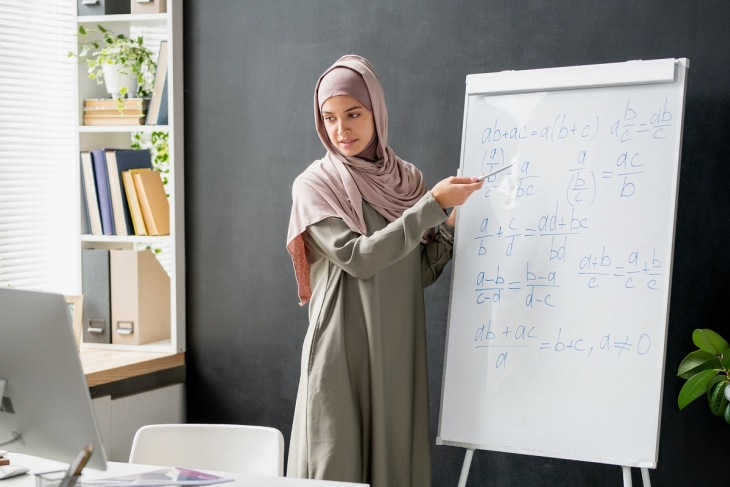Just like the term “virtual schooling,” the moniker “hybrid learning”—which came to the fore at the start of Covid disruptions—does not denote one educational model. At its most basic, a hybrid system means that sets of students in any given school or classroom are experiencing their education in different ways. Variations beyond these basics, however, are numerous. A new brief analyzing teacher survey results digs into the variations from the educator’s perspective.
Researcher Lora Bartlett of the University of California, Santa Cruz surveyed seventy-five teachers from nine states in November 2020 and conducted two semi-structured interviews with thirty-six of them in mid- and late-2020. The full set of respondents represents a close match to the demographics of the U.S. teacher labor force as reported by the National Center for Education Statistics’ Schools and Staffing Survey for the 2017–18 school year, but we do not know the demographic breakdown of the thirty-six teachers interviewed.
Twenty-two teachers reported teaching in one of the following hybrid learning modes in the first stages of the pandemic:
A parallel hybrid, in which students participate either fully remotely or fully in person. The teachers interviewed indicated their schools sorted students via parental opt-in, although quarantine requirements would also certainly have involuntarily affected the population of each group. The six teacher respondents in this category indicated they taught in one mode or the other consistently.
An alternating hybrid, in which students are split into two groups (A and B) and participate in a portion of the school week in person and a portion remotely so that buildings and classrooms are at approximately half capacity at any given time. This model has variations, with some schools splitting the day between groups A and B, some schools splitting the week, and still others alternating groups weekly. The four teacher respondents in this category indicated teaching both in-person and remote students, but not at the same time.
A blended hybrid model, in which students are participating in any given class simultaneously both in person and remotely. The seven teacher respondents in this category were required to teach both groups synchronously (what some have referred to as Zoomers and Roomers).
Five additional teacher respondents reported some fluctuation of models during their pandemic teaching.
The point of this survey and the resulting report was to document teachers’ working conditions during the early pandemic and to open the black box of the classroom in all of its revised forms. While respondents shared that in-person teaching was, in general, more difficult than in pre-Covid times due to masking, Plexiglas barriers, distancing, and more, they also expressed a preference for sticking as close as possible to what they knew. The subset of teachers who discussed hybrid learning in detail were less vexed when teaching in only one mode at a time, although any amount of remote teaching, they reported, resulted in technological headaches, absent or unengaged students, and an increased workload. Special ire resulted from having to teach in-person and online students simultaneously. Class time devolved into “chaos” for various reasons, with either in-person students or virtual students or both getting the short end of the stick—as the teachers described it.
The onset of the pandemic unleashed a hodgepodge of rapid and unplanned changes in work environments. Teachers, like many others, were forced to adapt. The sample here is small, and all those surveyed worked in traditional districts where change is almost always a dirty word, but their reported experiences are likely similar to others’ across the country. Bartlett is part of the Suddenly Distant research group, from which more reports on teachers’ working conditions during Covid should be forthcoming. Hopefully some brighter news will result from additional research into the later stages of pandemic-era teaching.
SOURCE: Lora Bartlett, “Specifying Hybrid Models of Teachers’ Work During COVID-19,” Educational Researcher (January 2022).




